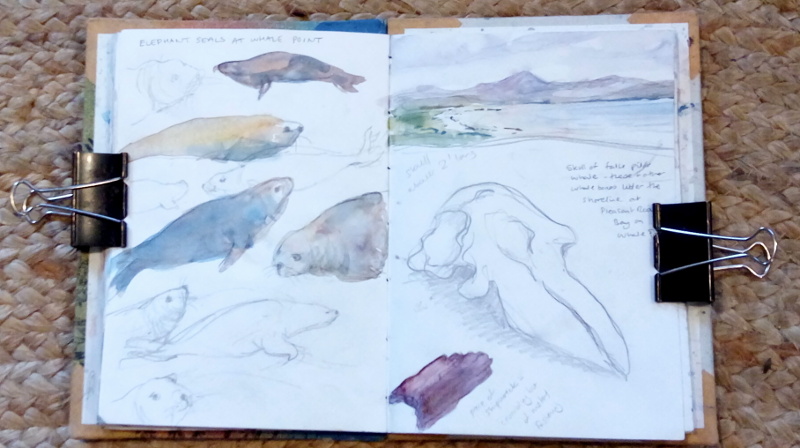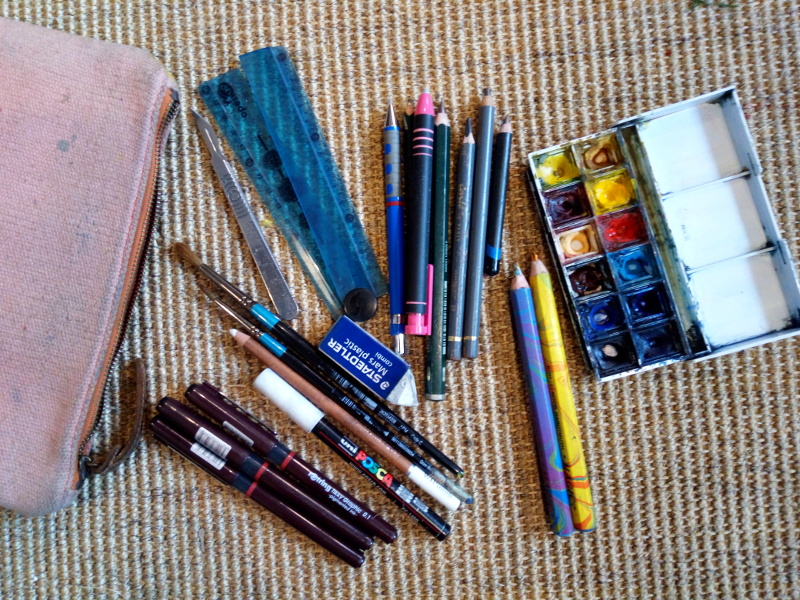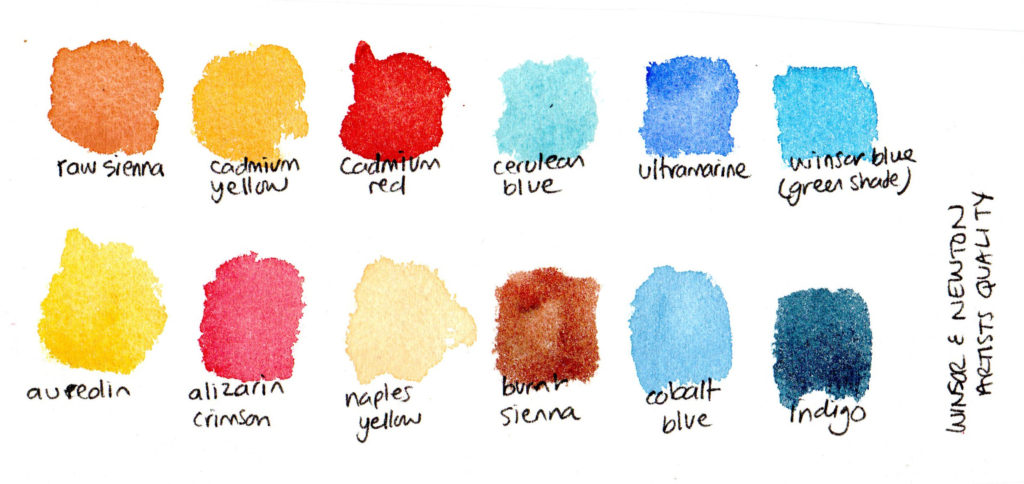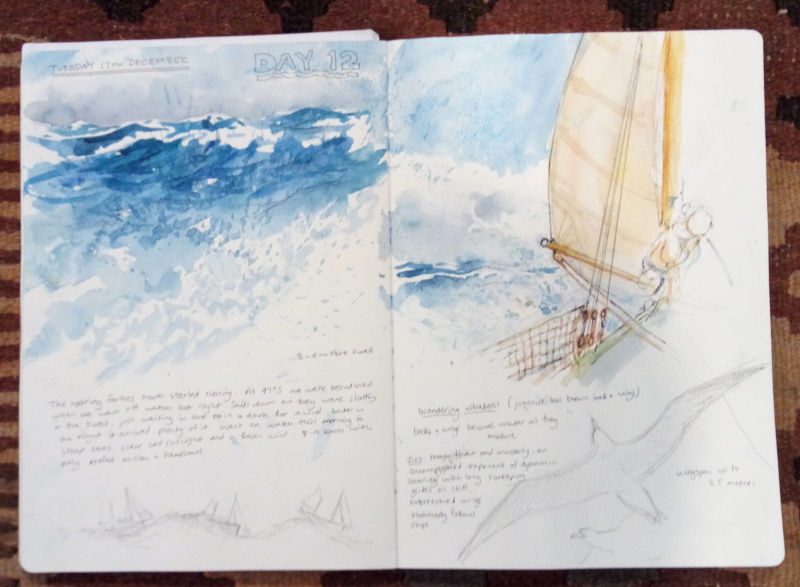Sketchbook Traveller
That’s quite enough of my travels – at least for now. This blog post is for those of you who like the idea of keeping a visual diary and have asked me about it, so I’ve had a look at what I took with me and my approach to sketching on the go. Of course you don’t have to go to crazy places to sketch. You can take the sensible approach and stay in one place to observe the changing world, seasons, garden, life around you. Take from this what suits you and, all you other sketchbook travellers out there, I’d love to hear your ideas too.

1. Travel light
The more gear you carry, the less likely you are to use it. The exception is if you have a camper van and the subjects are right outside your door, then you can do what you like! If you are walking any distance at all, being loaded down with gear limits your options. I use a small rucksack to keep my hands free.
2. Prepare for weather
Bulldog clips stop your pages flapping about on windy days. I also carry a folding pad to sit on damp grass or rocks, and of course a waterproof jacket!

3. Check your kit before you set off
Make sure pencils are sharp and nothing is missing. Leave behind anything you know you won’t use. Top up your paintbox (see no.4)

4. Choose your colours to suit the landscape
You’ll need different colours in different parts of the world – earth colours for inland, bright colours for tropical gardens, plenty of blues for islands and coast. I find it’s best to keep to a small selection (I have a small paintbox with twelve colours in it). I take mainly primaries so that I can mix any colour I need. I top them up from tubes rather than fiddling around getting the little half pans in and out.

5. Keep water safe
Keep paint water in a pot with a watertight lid so that you can stow it quickly if you need to move on. Another option is to use a water brush (which has a reservoir of water) – especially handy if you have to paint standing up and have nowhere to put a water pot.

6. Use a firm support
I use a hardback sketchbook so the covers give a firm support to work on (I prefer stitch bound to spiral bound as I often go across two pages, and for this reason it also has to be able to lie open flat). Another option is to have sheets of paper clipped to a small drawing board.

7. Start anywhere – don’t wait!
Don’t wait until you are in front of a pretty scene to start sketching – everything that you see, talk about or think about can be worth noting. Taxis, buses, stopping at a cafe, meals, cakes, signposts, snatches of conversation, anything that catches your eye. Sketchbooks are your personal view on the world and they make the ordinary extraordinary.

8. Add a map
If you love maps as much as I do, add them. Either drawn freehand, traced or stuck into your book. Then you can illustrate them, write on them, add your journey, or just use them as decoration.
You don’t have to travel to draw a map. The layout of your garden, your village, your thoughts, your regular walks, can call be made visual.

9. Draw on the move
If there is a chance of a wildlife sighting, or I’m with a group and can’t stop when I see something I like, I walk with sketchbook in hand and pencil in my pocket or strapped to the book (thanks for that one, Hilary Geelan!). If the object you’re sketching is moving, like wildlife, boats or people, don’t worry about making a mess, just grab a few lines. All movements tend to repeat so if the subject is still in sight, wait, then draw again when the same pose is repeated. Draw on top of drawings, just keep looking, keep the pencil moving and you’ll capture something of what you are seeing.

10. Finish off later
If it’s difficult to get the paints out on location, because it’s raining or you only have a few minutes or are in a crowded place, just get some pencil lines down and add colour as soon as you get back to somewhere with space and a table. Your colour memory will improve dramatically the more you do it (a quick photo with your phone can be a good memory aid too, especially for man made objects). I also add notes later, sketch any bits and pieces I’ve picked up during the day (leaves, pebbles, feathers, shells) and fill out the page. I also take the opportunity to cover up or rub out any bits that went too wrong! There is a sense that completing the page is helping to complete the day.


Feeling inspired? If you’d like to get involved and learn to sketch, hop across to my ‘Tuition’ page where I’ve listed a few workshops coming up. First ones are on 7th and 8th February in Woodbridge and I’d love to see you there. Beginners and people who think they can’t draw especially welcome!

Wow, I love your work. If I’m ever in England again, I’m going to visit your studio.
Great tips Claudia
You are an inspiration xxx
Inspirational. I wish I could join your workshops, but not to be… yet. All the very best xx